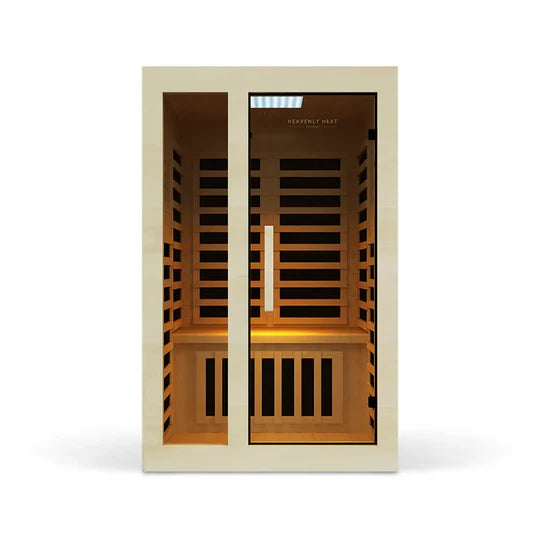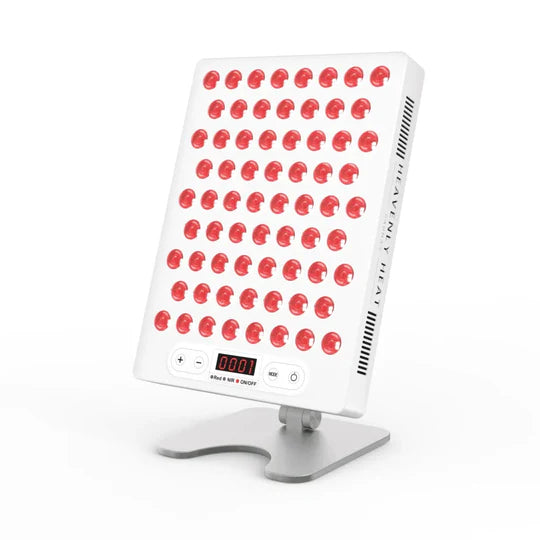Is Sauna Good For a Cold?

A sauna is a small room or enclosure designed to experience dry or wet heat sessions. These sessions are known to have various health benefits, including potentially providing relief from cold symptoms.
In this article, we will explore the relationship between saunas and colds, examining how saunas can help alleviate cold symptoms, considerations and cautions to keep in mind, and the ideal time to use a hot tub for cold relief.
What is Cold?
The Cleveland Clinic defines the common cold as a contagious upper respiratory infection that targets the nose, throat, sinuses, and trachea. It occurs when a virus, most commonly the rhinovirus , infects the mucous membranes of the airway, typically spreading through respiratory droplets or contaminated surfaces.
Primary causes of the common cold include:
Rhinoviruses: Responsible for up to 50% of cases; over 100 types exist.
Other viruses: Such as coronaviruses, adenoviruses, and respiratory syncytial virus (RSV), can also trigger colds.
Weakened immunity: More likely in children, the elderly, or those under stress.
Seasonal exposure: Cold weather and indoor crowding increase transmission.
Direct contact: Touching infected surfaces and then the face transmits the virus.
While usually mild, the cold can disrupt daily activities with symptoms like congestion, coughing, and fatigue. These issues affect productivity and social engagement, particularly during peak cold seasons.
Fortunately, management doesn’t rely solely on medications. Aside from rest and hydration, using a humidifier or saline nasal spray can offer relief. While there's no cure, maintaining good hand hygiene and supporting your immune system with healthy habits offers a hopeful path to fewer infections and quicker recovery.
The Science Behind Sauna and Cold & Flu
If you catch colds often, regular sauna sessions might help you stay healthier. One study in Annals of Medicine followed people for six months.
Half of them used saunas regularly, while the other half didn’t. By the end of the study, the sauna group had far fewer colds, especially in the last three months, when their cold rate dropped by almost half.
That’s a big difference. Another study from the Medical Journal of Australia looked at people with early cold symptoms.
Some of them inhaled hot air inside a sauna, while others didn’t. The hot air didn’t cure the cold, but it helped people feel better faster and use less medicine.
These results show that saunas might not only help prevent colds but also make you feel better sooner when you get sick.
7 Ways sauna can help colds
- Opens up the airways: The heat and steam in saunas can help open up the nasal passages and ease congestion, allowing for better breathing and alleviating some cold symptoms.
- Enhances circulation: Saunas increase blood flow and circulation in the body. This improved circulation can help bring fresh oxygen and nutrients to affected areas, potentially aiding in the healing process of a cold.
- Promotes relaxation and stress reduction: The heat and calming atmosphere of saunas can help relax the body and mind, reducing stress levels. This relaxation can contribute to a stronger immune system, which is essential for fighting off cold symptoms.
- Encourages detoxification: Saunas induce sweating, which helps flush out toxins from the body. This detoxification process may support the body’s ability to fight off viruses that cause colds.
- Improves sleep: Spending time in a sauna can promote better sleep quality. Quality rest is vital for overall well-being, and it can also aid in recovering from a cold.
- Relieves muscle tension: The heat applied during sauna sessions can help relax muscles and reduce overall tension in the body. This relaxation can alleviate cold symptoms, such as body aches and pains.
- Hydrates the respiratory system: Saunas with a steam option can add moisture to the air, helping to keep the respiratory system hydrated and potentially easing irritation caused by cold-related coughing or a sore throat.
Other Therapies that help with a Cold
Steam Inhalation
If your nose feels blocked and you’re struggling to breathe during a cold, steam inhalation might give you the relief you need.
The warm, moist air helps loosen up thick mucus and clears your nasal passages so you can breathe more easily.
A study published in the American Journal of Otolaryngology in 1987 found that people who inhaled steam at 42–44°C for two 20-minute sessions had fewer cold symptoms and better airflow through their nose. Steam doesn’t cure a cold, but it can definitely help you feel more comfortable.
Honey and Ginger Tea
When you’re down with a cold, a warm cup of honey and ginger tea can feel like the perfect remedy, and it actually does more than just comfort you.
Ginger helps warm your body and fight off inflammation, while honey soothes your throat and fights germs. Together, they make a powerful team against cold symptoms.
In fact, a 2020 study in BMJ Evidence-Based Medicine found that honey helped reduce cough frequency and severity better than usual care. It’s a simple, natural way to feel better without reaching for antibiotics.
Eucalyptus Oil Aromatherapy
If you're dealing with a stuffy nose and constant coughing, eucalyptus oil aromatherapy might give you the relief you’re looking for.
When you breathe in the steam, the natural compound eucalyptol helps loosen mucus, clear your airways, and calm your cough.
It makes breathing feel easier and less painful. According to a 2022 study in the Journal of Integrative and Complementary Medicine, eucalyptus products worked better than a placebo at easing cough symptoms in people with colds, without causing any serious side effects.
Is a sauna Good For a Cold?
Saunas offer relief from cold symptoms but don’t cure the cold. While they can alleviate discomfort temporarily, saunas don’t address the cold’s root cause. If using a sauna during a cold, stay hydrated and be mindful of your body.
Consult a healthcare professional before sauna use if you have pre-existing conditions or are pregnant. Sauna suitability varies, so ensuring safety is crucial.
Saunas, used for centuries, offers relaxation, improved circulation, and detoxification benefits. Regular use may relax muscles, reduce stress, and enhance overall well-being.
Some studies suggest cardiovascular benefits from saunas, improving heart health and circulation. Heat exposure increases heart rate, potentially benefiting cardiovascular function over time.
5 Considerations and Cautions
- Duration: Keep your sauna sessions to a moderate duration, typically no more than 15-20 minutes, to avoid overheating or dehydration.
It’s important to remember that sauna bathing is a form of passive heat therapy, and prolonged exposure to high temperatures can strain your cardiovascular system. By limiting your sauna time to around 15-20 minutes, you can enjoy the benefits of relaxation and improved circulation without putting excessive stress on your body.
- Temperature: Ensure the sauna is at a comfortable temperature for you, and avoid excessively high temperatures that may cause discomfort or dizziness.
When using a sauna, it’s crucial to find a temperature that suits your comfort level. While some individuals prefer higher temperatures for a more intense experience, it’s essential to listen to your body and avoid overheating. Excessive heat can lead to symptoms like dizziness, nausea, and even heat exhaustion, so always prioritize your well-being when adjusting the sauna temperature.
- Cleanliness: Maintain proper hygiene by sitting on a towel or using a sauna mat to protect yourself from bacteria or viruses that may be present on the sauna bench or floor.
While saunas are known for their detoxifying effects, it’s important to remember that they are communal spaces where germs can linger. To protect yourself from potential infections, consider using a clean towel or a sauna mat to create a barrier between your skin and the sauna surfaces. This simple precaution can help you enjoy your sauna experience without worrying about exposure to harmful bacteria.
- Post-sauna care: After a sauna session, take a cool shower to refresh your body and close the pores. This can help prevent further inflammation or irritation, which can worsen cold symptoms.
Following a sauna session, it’s beneficial to cool down your body gradually to prevent sudden temperature changes. Taking a cool shower can help regulate your body temperature and close your pores, reducing the risk of skin irritation or inflammation. This post-sauna ritual not only promotes relaxation but also supports your body’s natural healing processes.
- Personal limits: Pay attention to your body’s signals and listen to what feels comfortable for you. If you feel any adverse effects or discomfort during a sauna session, it is crucial to exit the sauna and seek medical advice if necessary.
When is a good time to use my hot tub for cold relief?
In addition to saunas, hot tubs can also provide relief for cold symptoms. Using a hot tub for cold relief may be beneficial at different stages of a cold:
- Early stages: When symptoms are mild, spending time in a hot tub can help promote overall relaxation and potentially reduce the severity of the cold.
- During congestion: If you are experiencing nasal congestion, the steam from a hot tub can help clear your sinuses and provide comfort.
- For muscle pain relief: Hot tubs with massaging jets can help soothe muscle aches and pains commonly associated with colds.
- Keeping warm: Cold temperatures can exacerbate cold symptoms. Using a hot tub can provide warmth and comfort, especially during the colder seasons.
Conclusion
While saunas may not cure a cold, they can provide temporary relief from symptoms and contribute to overall well-being.
The heat, relaxation, improved circulation, and other benefits associated with sauna sessions can help alleviate congestion, muscle tension, and stress, promoting a more comfortable experience while fighting off the common cold.







































